Introduction
Welcome to our first lesson on Raspberry Pi. Unlike popular control board such as Arduino, Raspberry Pi is a REAL personal computer with Operation System(OS) like Apple iOS in MacBook and Windows in PC. This allows Raspberry Pi to do much more complicated jobs than Arduino can do.
In this lesson, we will tell you how to install and config Raspbian OS(a Debian Linux distro) in your lovely Raspberry Pi.
First, please learn more about 4 model of raspberry Pi boards differences.
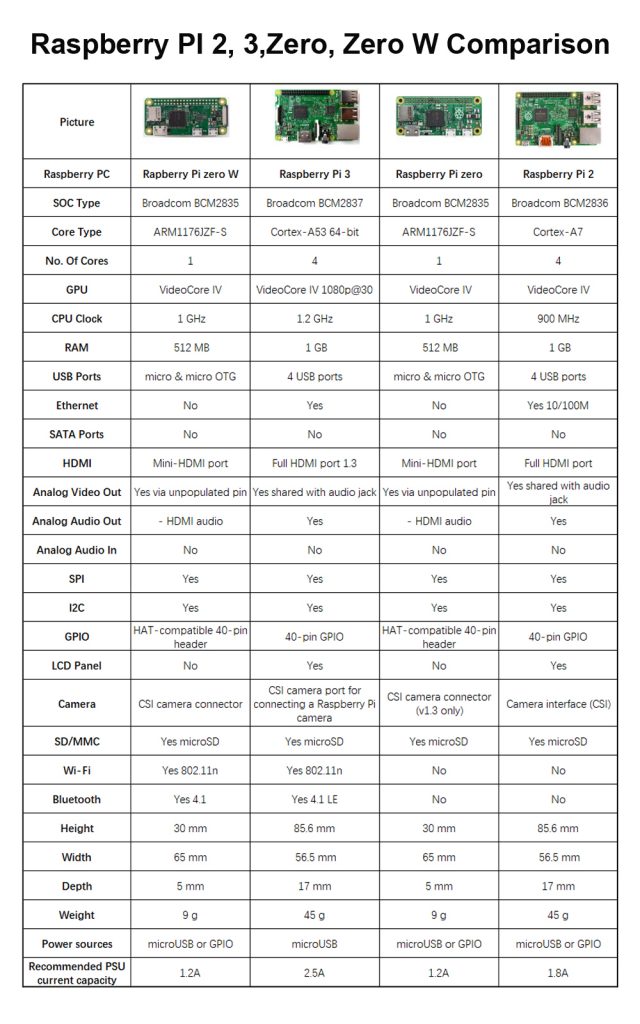
Software Preparation:
Imager utility: Win32DiskImager utility
OS: Raspbian (Use OS Raspbian 2016-11-25 in the subsequent tutorials)
Format Tool: SDFormatter (Optional)
SSH Tool: PuTTY (for Windows users)
Installation Raspbian Operation System(OS):
Download the image for the Raspbian system onto your computer. You can select any version of RASPBIAN system on the official website: https://downloads.raspberrypi.org/raspbian/images/. Write the image via Win32DiskImager utility into your microSD/TF card(minimum 8G), then plug the card into the slot on your Raspberry Pi.
Note: For 2016-11-25 release or above, SSH (a protocol securing remote login session and other network service) is Disabled by default. Therefore, when you need to log in remotely, you need to create a file named “ssh” under /boot/ to enable it.
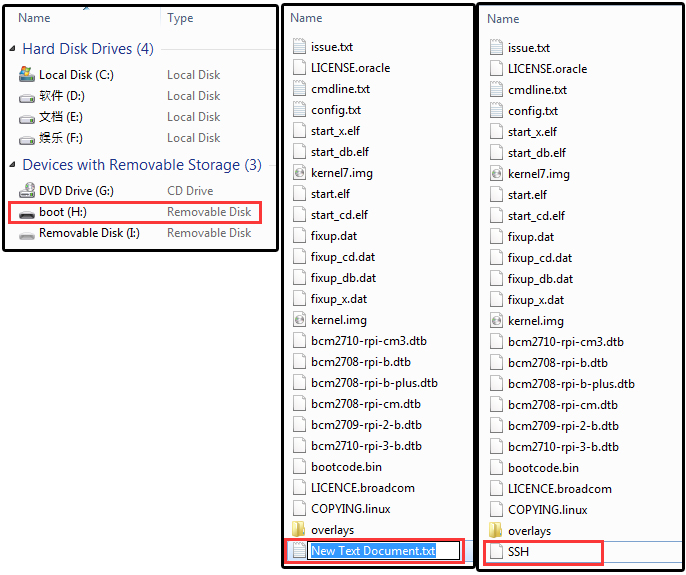
Access to Raspberry Pi’s Console
In the subsequent tutorials, the console will be used from time to time. Use use console to interact with Raspbian OS by command line. Therefore, you may need to know how to access to Raspberry Pi’s console.
Using Console in GUI (terminal, recommended for beginners)
Connect a monitor to Raspberry Pi via HDMI cable. Connect mouse and keyboard to USB ports. Make sure your Raspbian OS MicroSD card is plug in the SD card slot. At last, connect a 5V 2A DC power to the RPi3. There is a little different from Pi Zero to Pi 3, please refer to the installation guide as followed:
| Raspberry Pi Zero |
Raspberry Pi Zero W |
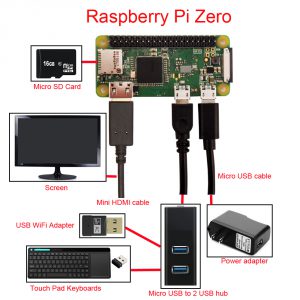 |
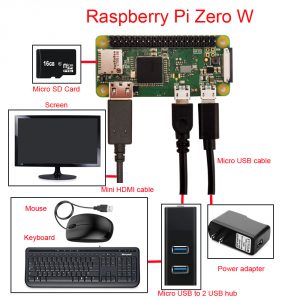 |
| Raspberry Pi 2 |
Raspberry Pi 3 |
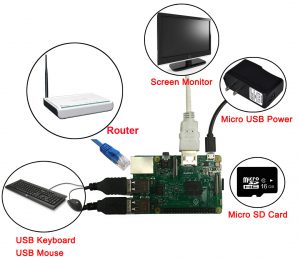 |
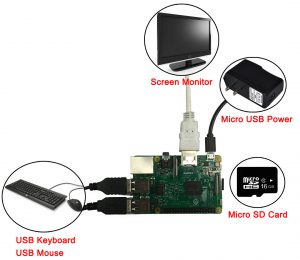 |
Power on the screen and connect wifi hotspot if needed. Then you can see the display showing the Raspberry Pi icon as shown below:

If the monitor displays colored texts with a black background after booting, and that is in console. You can just use this as a terminal (but not recommend for beginners), or change the option for automatically loading a graphic user interface (GUI). To activate GUI, you can type in startx with the keyboard and press Enter, and to always boot up to GUI, type in sudo raspi-config and go through Boot Options > Desktop/Desk Autologin, and reboot. Wait for a while and the GUI display will show up as below.
Using Console
There are several ways to use the console only and they can be divided into mainly two ways: using directly and remotely.
A. Directly(A screen monitor is needed when you use the console directly.)
1. Connect the monitor to power. Then connect it with the Raspberry Pi via the HDMI cable. Connect the keyboard and mouse. Plug the MicroSD card into the Raspberry Pi . At last, connect a 5V 2.5A DC power to the RPi3. Power on the screen and connect wifi hotspot if needed. Then you can see the console full screen.
2. Click the icon of Terminal on the screen, or press CTRL+ALT+T simultaneously.
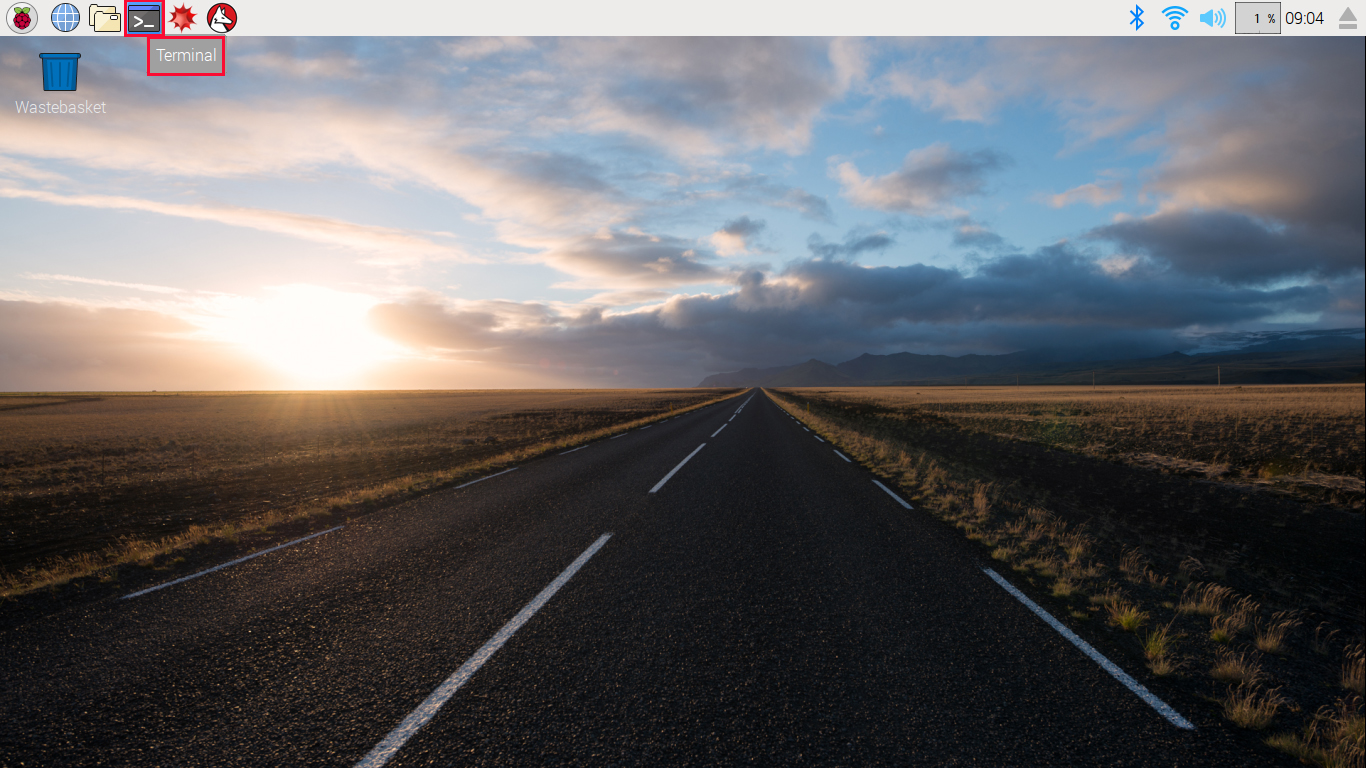
3.Then a terminal will pop up as follows:
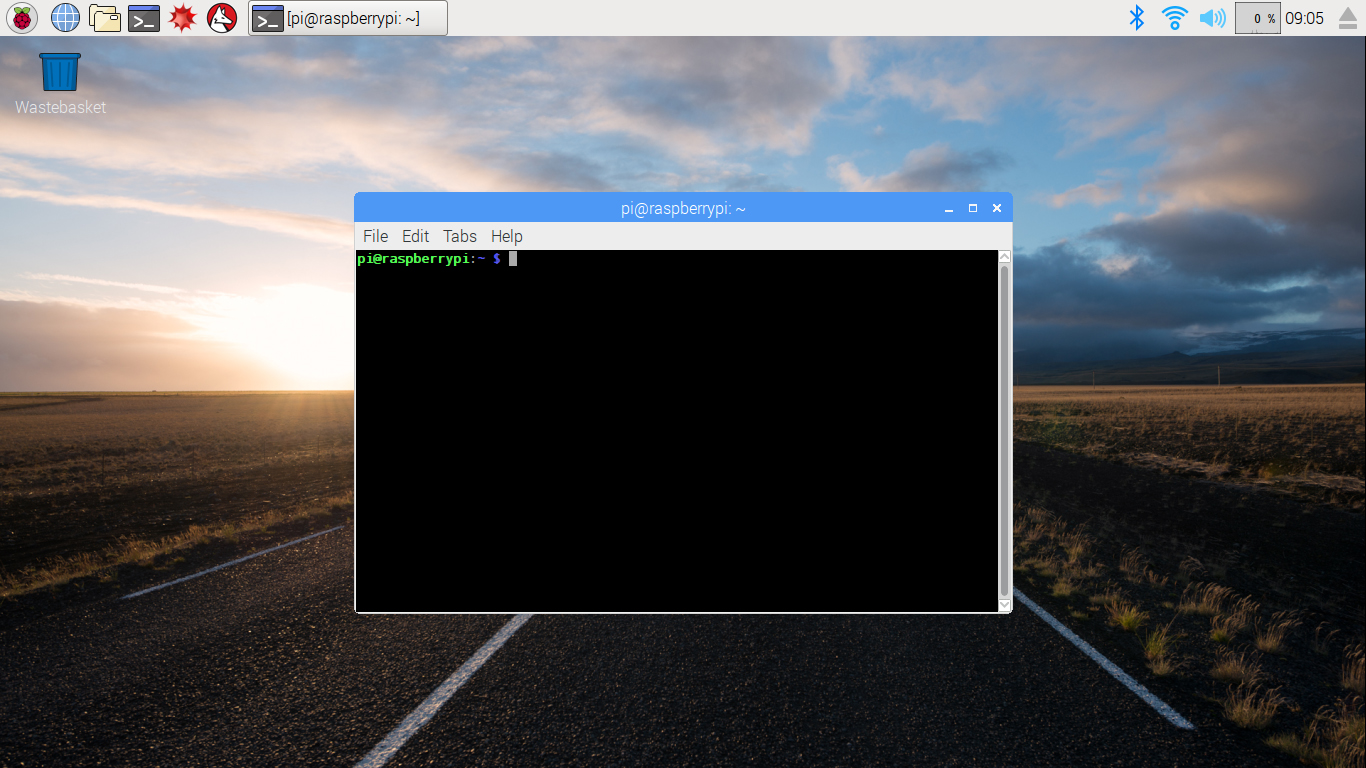
If you boot into GUI instead, Open a terminal, type in sudo raspi-config and press enter, go through Boot Options > Console/Console Autologin, and reboot.
B. Remotely
Note: when you need to log in remotely, you need to be enable the SSH server. Following the following way can be enable the SSH server via command. Press the command sudo raspi-config in terminal, and then select Advanced Options and click enter; and then select SSH and click enter
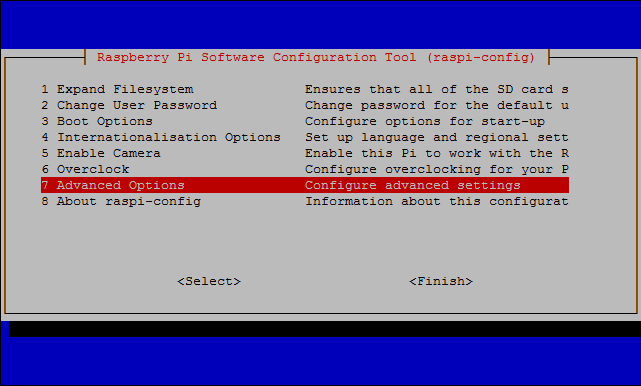
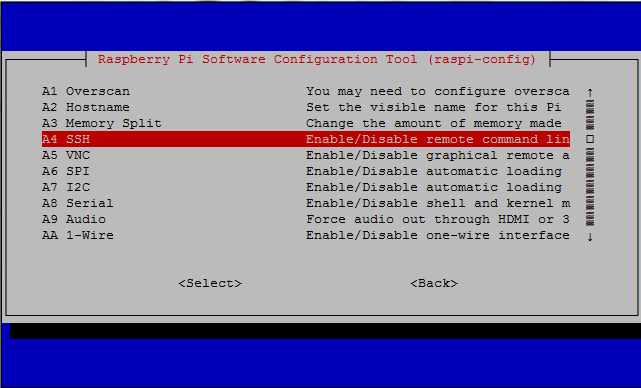
For three platforms: Windows, Mac and Linux, it might be a little bit different to do this.
<p(1) Linux and Mac users can easily log into the Raspberry Pi via ssh. On Linux or Mac, find Terminal and open it.

Type in ssh pi@IP address(ssh is the tool for remote login; pi is the user name, and as the name suggests, your RPi’s IP address) and then press Enter to confirm. For example:
ssh [email protected]
If you get a prompt that no ssh is found, you need to install a ssh tool like Ubuntu and Debian by yourself:
sudo apt-get install ssh
(2) For Windows users, you may use a ssh tool to log into Raspberry Pi remotely, like PuTTY.
Step 1. Plug the TF card into the Raspberry Pi, power the RPi with a 5V 2.5A DC power and connect wifi hotspot (or the Ethernet cable). Now the Raspberry Pi is ready.
Note: when connect wifi hotspot, you need to connect with screen monitor, keyboard and mouse
Step 2. Find out the IP address of the RPi.
Method A: Connect your Pi to monitor and mouse, click LAN or WIFI icon to get the IP address as following photo
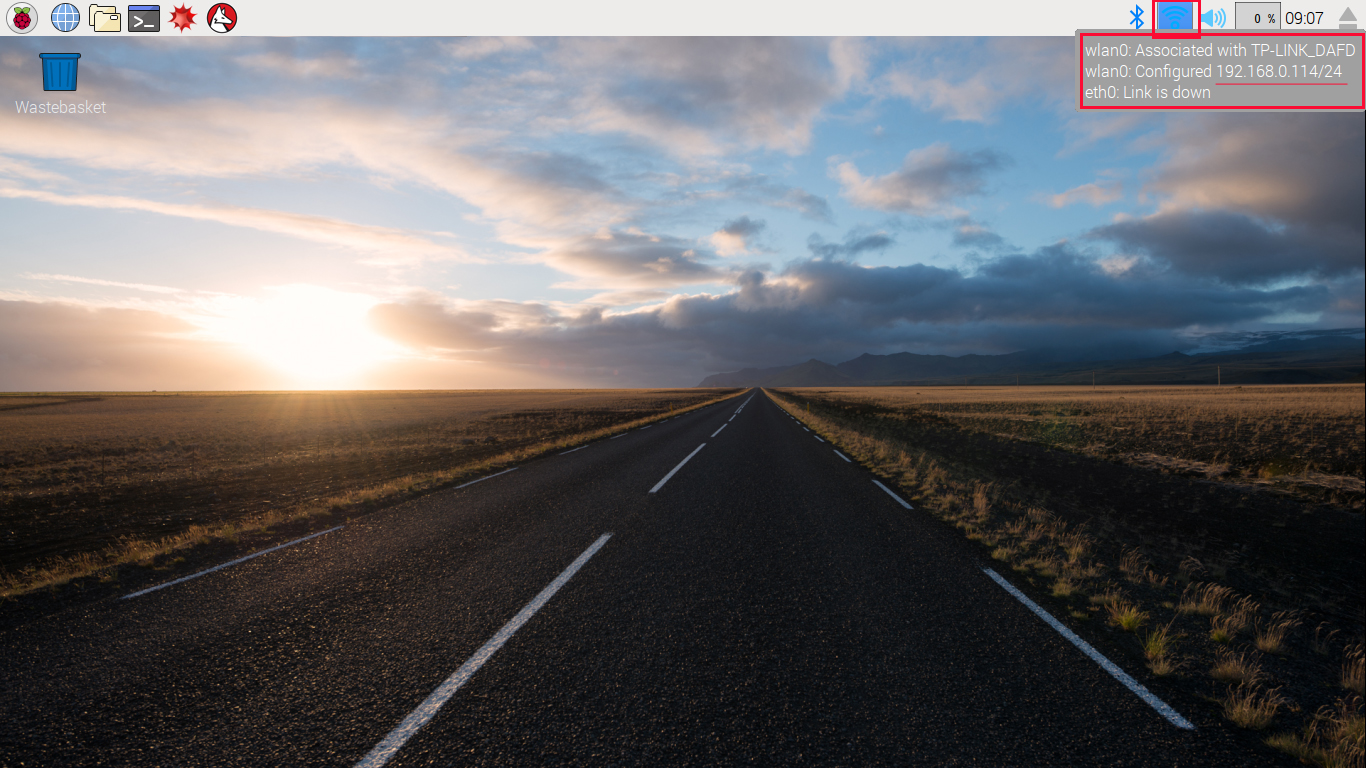
Method B: you can also find the IP address by typing terminal command : ifconfig
Step 3. Open PuTTY and click Session on the left tree-alike structure (generally it’s collapsed upon PuTTY startup):
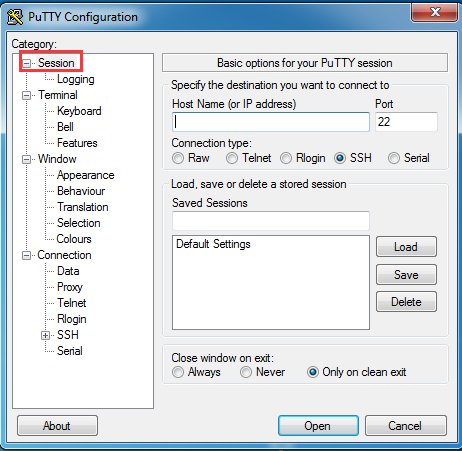
Step 4. Enter the IP address you got from Step 2 into the textbox under Host Name (or IP address) and 22 under Port (by default it is 22) /span>

5. Click Open. Note that when you first log in to the Raspberry Pi with the IP address, you’ll be prompted with a security reminder. Just click Yes. When the PuTTY window prompts login as: type in the user name: pi, and password: raspberry (the default one, if you haven’t changed it).
Note:
when you’re typing the password in, the window shows nothing just null, but you’re in fact is typing things in. So just focus on typing it right and press Enter. After you log in the RPi successfully, the window will display as follows:

For other platforms, please contact your supplier.
Now, no matter what method you take, you can get in the console of your Raspberry Pi 3.































